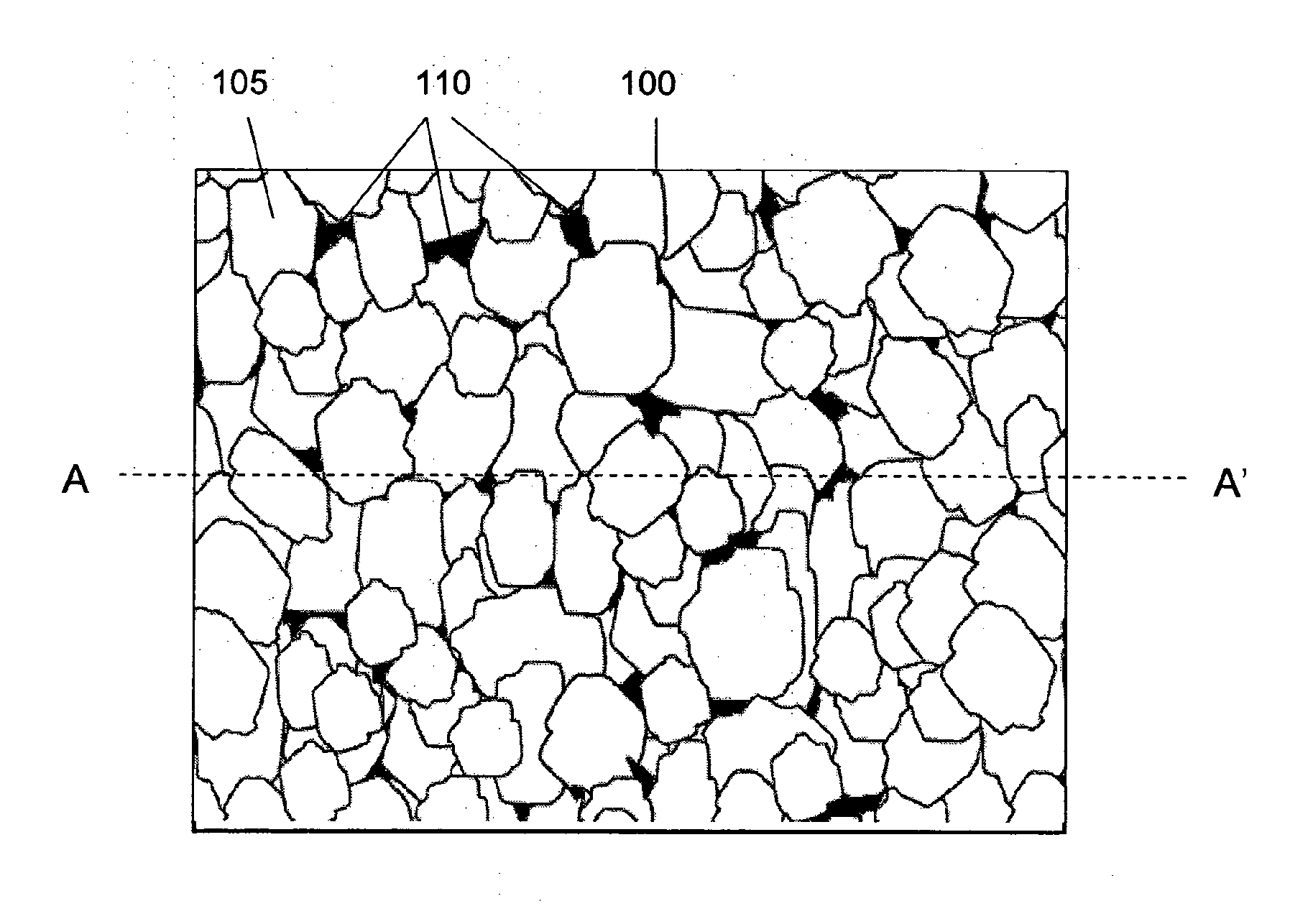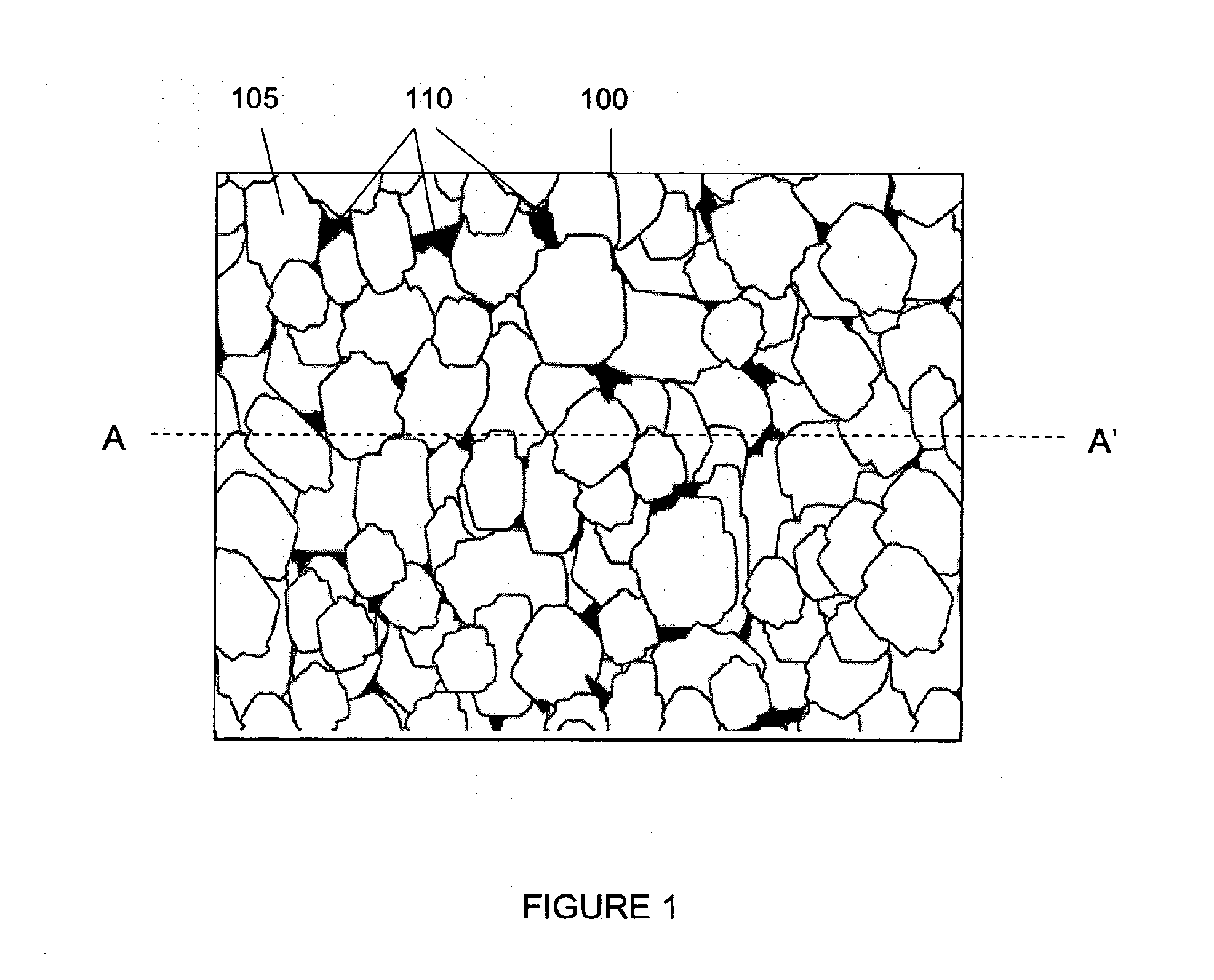Porous waste glass membrane
a waste glass and glass membrane technology, applied in the direction of glass making apparatus, manufacturing tools, membranes, etc., can solve the problems of poor mechanical strength, poor chemical durability, poor temperature resistance of polymeric membranes, etc., and achieve the effect of high throughput or flux
- Summary
- Abstract
- Description
- Claims
- Application Information
AI Technical Summary
Benefits of technology
Problems solved by technology
Method used
Image
Examples
example 1
[0053]Glass particles and a foaming agent are combined together to form a combination. In this example, the glass particles comprises crushed waste glass obtained from used glass bottles. The waste glass is initially crushed and then milled using a ball mill to prepare a fine powder of glass particles. The glass particles are then sieved to obtain an average glass particle size of 75 μm±25 μm. The combination of the glass particles and the foaming agent are then ball milled to produce a homogeneous mixture. A binder is then dissolved in water and added to the homogenous mixture of glass particles and foaming agent to form a slurry. In this example, the foaming agent used comprises of calcium carbonate and the binder used is an inorganic binder comprising of sodium silicate. The ratio of water added to the mixture comprising of glass particles, binder and foaming agent is 1:10. Specifically, 10 ml of water is added for every 100 gm of the mixture. The slurry is then poured into a mou...
example 2
[0054]The method for producing a glass membrane in accordance with this invention is similar as example 1. However, the amount of foaming agent added is 4% by weight, the amount of binder added in the range between 0.1% and 50% by weight and the amount of glass particles added is in the range between 46% and 95.9% by weight.
example 3
[0055]The method for producing a glass membrane in accordance with this invention is similar as example 1. However, the amount of foaming agent added is 6% by weight, the amount of binder added is 8% by weight and the amount of glass particles added is 86% by weight.
PUM
| Property | Measurement | Unit |
|---|---|---|
| size | aaaaa | aaaaa |
| size | aaaaa | aaaaa |
| size | aaaaa | aaaaa |
Abstract
Description
Claims
Application Information
 Login to View More
Login to View More - Generate Ideas
- Intellectual Property
- Life Sciences
- Materials
- Tech Scout
- Unparalleled Data Quality
- Higher Quality Content
- 60% Fewer Hallucinations
Browse by: Latest US Patents, China's latest patents, Technical Efficacy Thesaurus, Application Domain, Technology Topic, Popular Technical Reports.
© 2025 PatSnap. All rights reserved.Legal|Privacy policy|Modern Slavery Act Transparency Statement|Sitemap|About US| Contact US: help@patsnap.com



